11 of the best Wharfedale speakers of all time
Wharfedale has made some great speakers over the years, so it wasn't difficult to choose some highlights
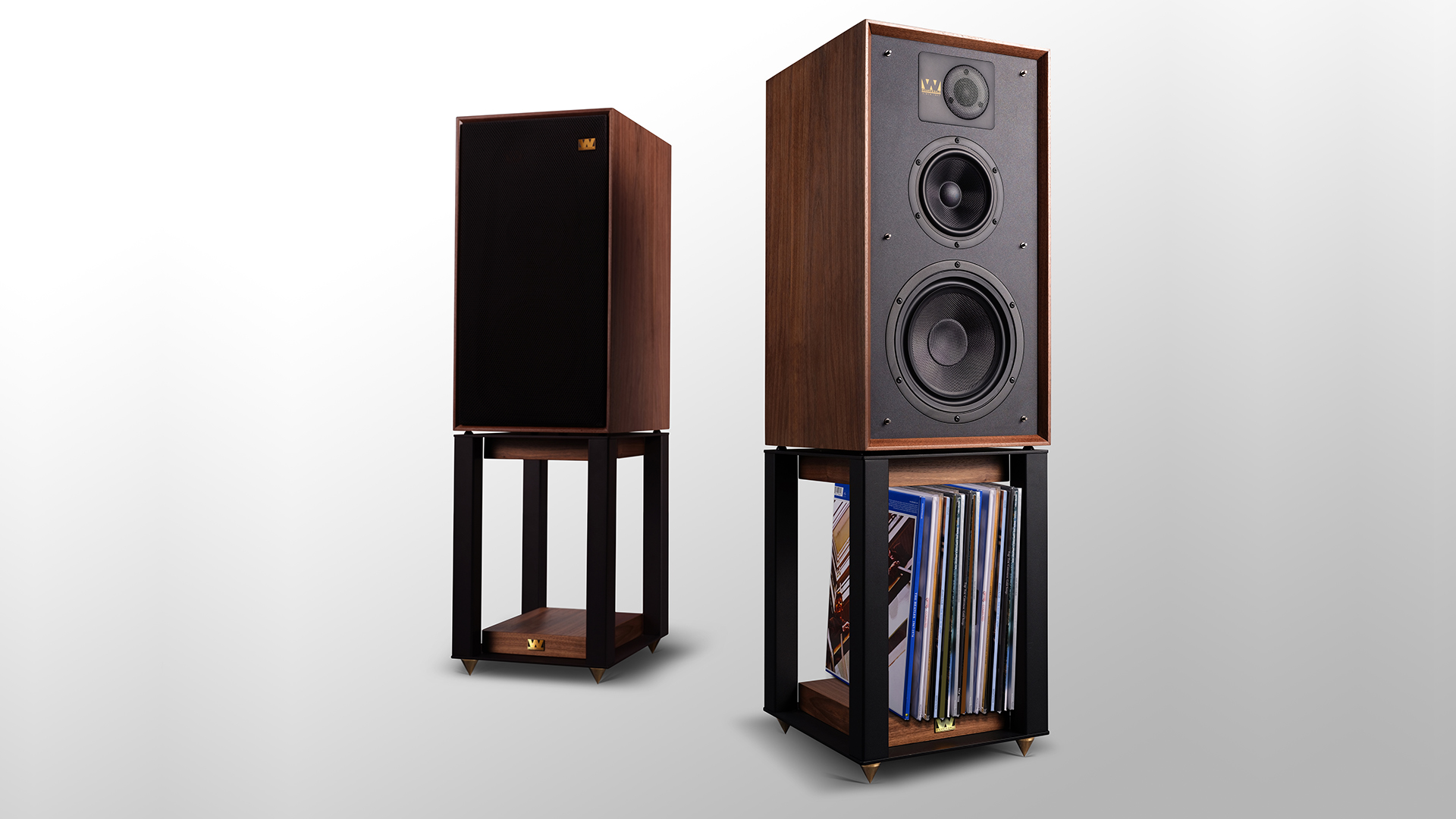
Since the company was founded over 80 years in the business, Wharfedale has produced numerous amazing-sounding speakers, some of which have made it into the What Hi-Fi? Hall of Fame.
A key reason for this has been the company’s ability to create fantastic value for money speakers that offer reliable audio, despite costing less than you’d expect. As a result, Wharfedale speakers have been a staple sight in our test rooms and magazine pages since What Hi-Fi? first opened its doors in the late 1970s.
Recently, Wharfedale’s shown it is not above celebrating its heritage by launching new entries into classic lines of speakers like the new Wharfedale Super Denton it launched at the Bristol Hi-Fi Show earlier this year.
This is great, but with so many great products in Wharfedale’s history, you may justifiably be wondering which are THE best of the best. Here to help we’ve created this guide detailing the British firm’s best speakers, past and present as part of our latest British Hi-Fi Week special event.
If you think we’ve missed any, make sure to get involved with the conversation on social media feeds and forums!
Wharfedale Bronze drive unit (1932)

Gilbert Briggs founded Wharfedale in 1932. Briggs was a keen music and audio enthusiast and developed the company’s first product – the Bronze drive unit – in his cellar. At the time such things were considered cutting edge technology and involved much experimentation. He lived in Ilkley, Yorkshire, in a valley known as Wharfedale, and so that’s what he called his new company.
That original drive unit was initially sold as a single driver, as back then early audio enthusiasts built their own enclosures. It wasn’t until 1934 that the Bronze featured in a fully assembled Wharfedale ‘cabinet speaker’ and that was called the Nubian.
The latest hi-fi, home cinema and tech news, reviews, buying advice and deals, direct to your inbox.
Wharfedale Corner Cabinet (1947)

After the war, Briggs continued to develop his speakers. In 1947 the company released the Corner Cabinet, claimed to be the first two-way hi-fi speaker for home use. At the time multi-way speakers were the preserve of cinemas and theatres, so this was a massive technological leap forward for home audio.
The Corner Cabinet’s enclosure was made in solid mahogany, though a solid oak option was also offered. By current standards they were pretty big boxes at 107 x 65 x 47cm (hwd), though would have probably have been considered reasonably compact for the time. The claimed frequency response was an impress 40Hz to 18kHz and the power handling was rated at a modest 10 watts. A three-way version was also subsequently developed.
Wharfedale SFB/3 (1956)
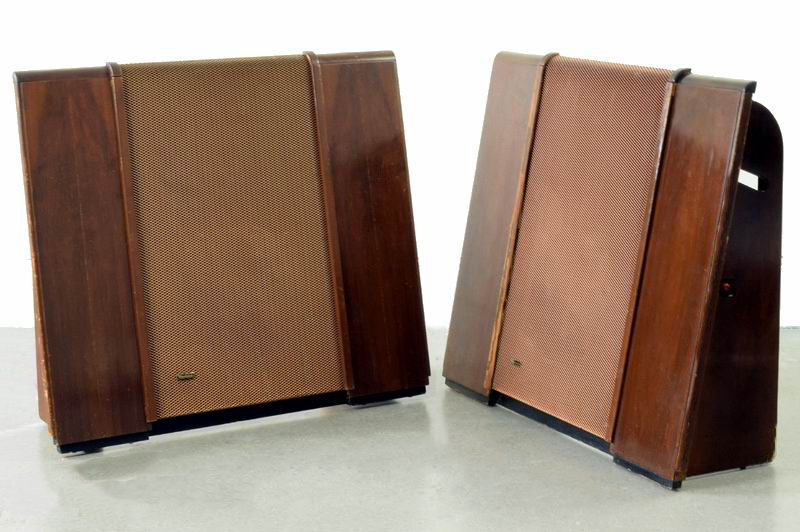
The Wharfedale SFB/3 was Briggs’ answer to Quad’s ESL57 electrostatics. It was a three-way, open-back speaker with a sand-filled baffle. The idea behind the filled baffle design was to create a rigid but well-damped structure for the drive units to work from, but the lack of a box behind was just as unusual. This approach avoided the cabinet resonances that are part and parcel of any enclosure.
The three-way drive unit array was made up of 3in, 10in and 12in units, with the two larger drivers being connected in parallel, and the tweeter crossover consisted of a single capacitor.
Wharfedale recommended using an amplifier with at least three watts of power to get decent volume levels. The SFB/3s measured 79 x 86 x 30cm (hwd) and weighed in at around 29kg.
Wharfedale Linton (1965)

The original Linton went on to become one of the best selling speakers of its era. It started off as a two-way model with a 3in tweeter and 8in bass unit, but over time developed into a three–way design called the Linton 3XP.
That original stood out for the innovative use of a Flexiprene roll-surround in the suspension of its bass unit. The tweeter was also unusual in being encased in its own acoustic dome to isolate it from the vibrations generated by the bass unit.
Wharfedale Diamond Mk1 (1982)
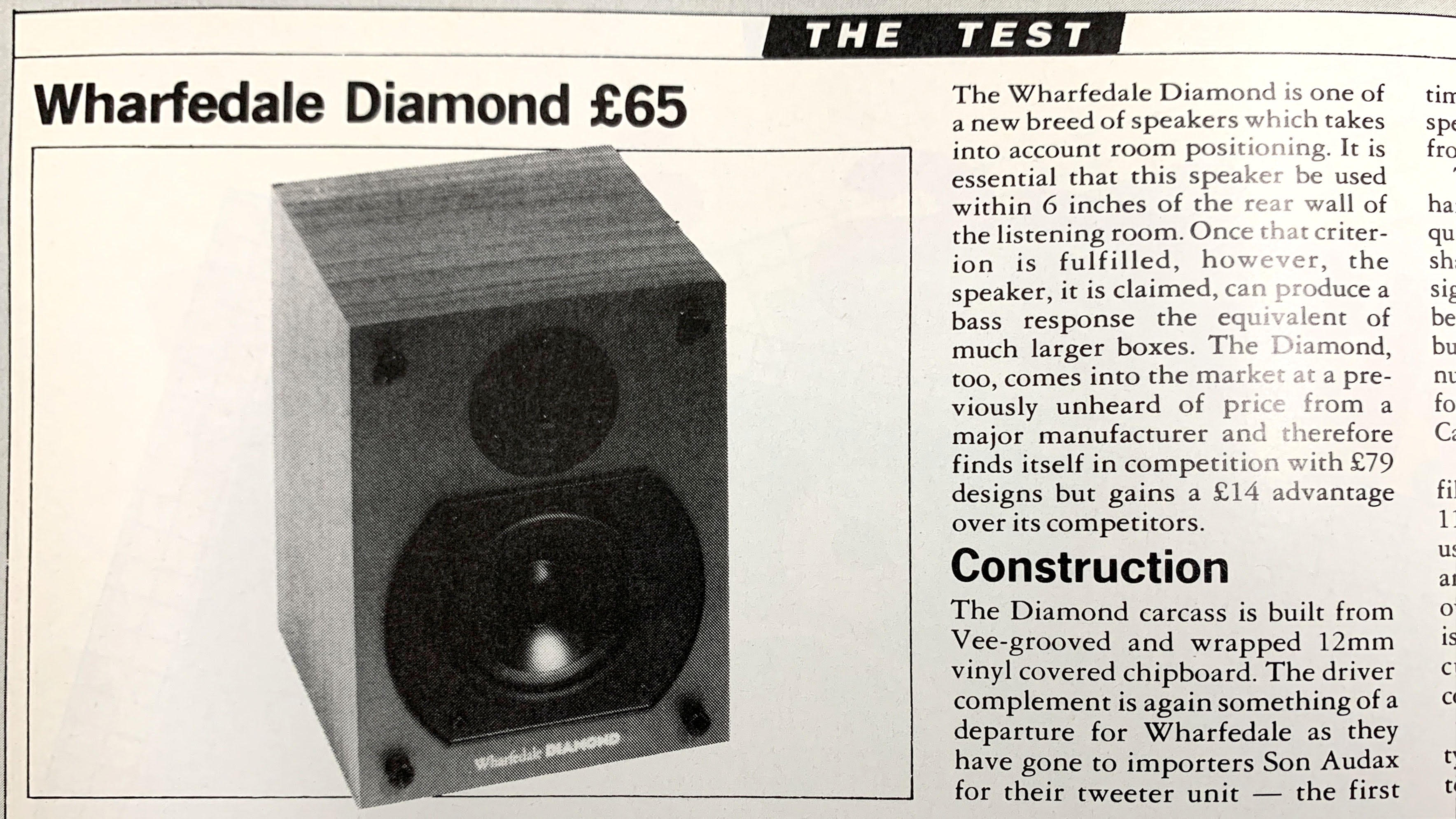
When Wharfedale launched the original Diamond Mk1 in 1982, we doubt whether anyone – even Wharfedale – anticipated the scale of their success. The Diamond quickly became the core of the company’s product output and spawned various off-shoots, including a ‘before its time’ powered model, as well as a luxury version called the Super Diamond, which was wrapped in a smart real-wood veneer.
That Mk1 was a squat thing standing just 24cm high and had an internal volume of just 5.2 litres. It cost just £65 on launch and soon built up a mighty reputation for being musically talented. These speakers delivered surprising bass weight for their modest size and had far more finesse than their lowly price suggested.
The sonic balance was a little rounded at the top end to avoid the basic tweeter becoming exposed, but the capable 11cm long-throw polypropylene mid/bass unit compensated.
Given a decent source and good budget amplification they delivered entertaining results. At the price, little came close.
Wharfedale 708 (1985)

Wharfedale was flying high in the mid-80s thanks in no small part to the success of the Diamond. At this point the company pushed hard on engineering innovation and the result was the impressive £300 708 standmounters.
The big news here was the enclosure material. Wharfedale’s chief engineer had just come over from Celestion where he did pioneering work on speaker cabinets using an aluminium honeycomb material in that company’s SL600 high-end flagship. This material’s rigidity and low mass resulted in vanishingly low levels of cabinet colouration compared to the wooden alternatives of the time. The same material couldn’t be used for Wharedale’s 708 because of their more modest selling price, so a more economical alternative had to be found. And it was.
The 708’s 28mm-thick panels were formed by sandwiching polystyrene foam between two sheets of Melamine. It worked really well from a performance point of view, giving the speakers an astonishing clean presentation for a model at their price.
Of course, having one of the best metal dome tweeters on the market helped, as did the use of a high quality loaded polypropylene mid/bass. The engineers also did away with conventional bolt fixings for the both drive units, developing a camera-lens-like screw fit into the cabinet instead. The advantage was claimed to be more even clamping pressure, and let’s not forget it looked neater thanks to the lack of visible fixings. The 708 were hugely impressive design on so many levels.
Wharfedale 505.2 (1990)
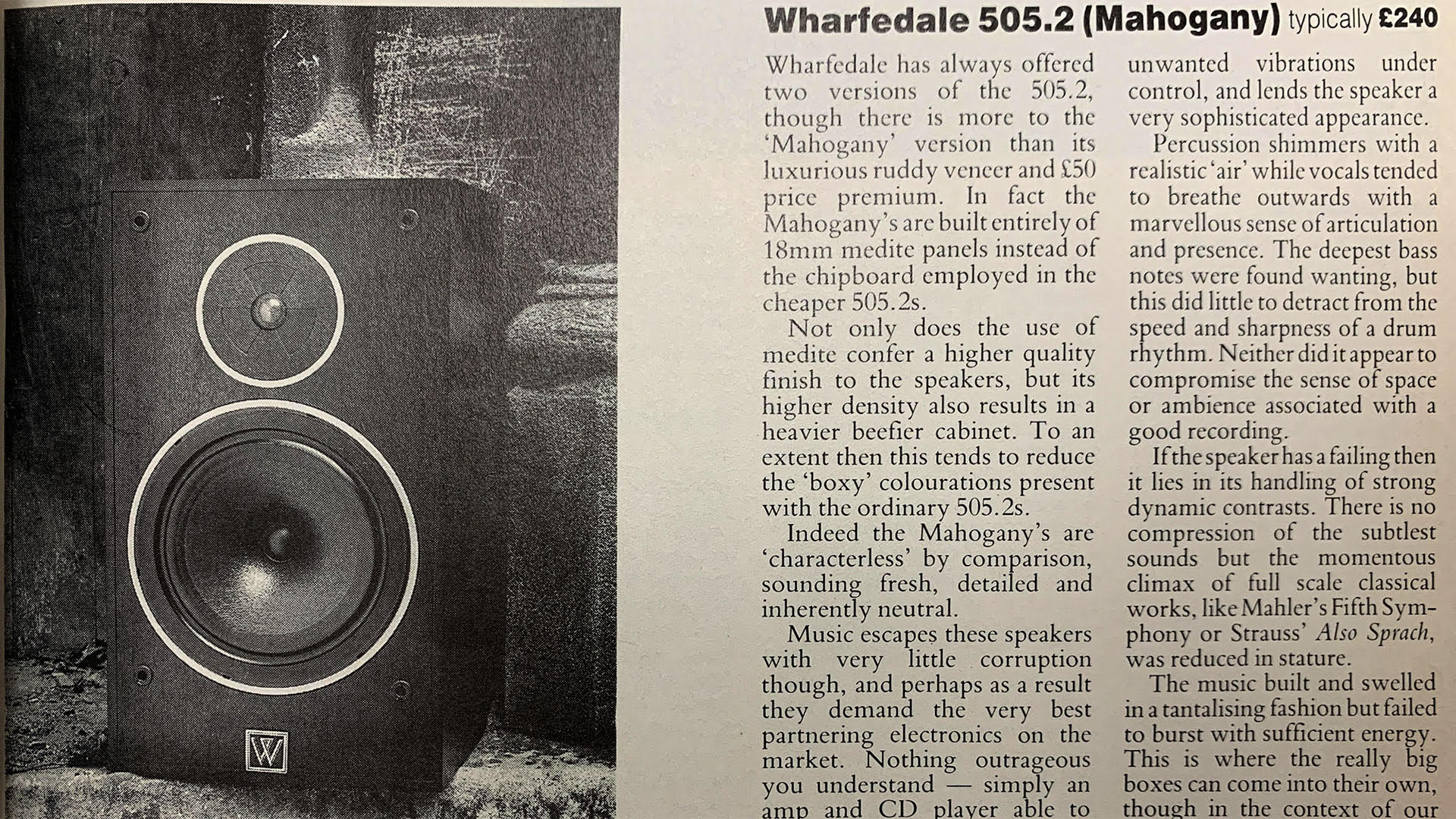
The 505.2 were another massive success for Wharfedale, sitting in the mid-market and delivering a sound of impressive polish and insight. They were a £169 two-way standmounter that echoed the clean-cut appearance of the mighty 708, but at around half the money. There was no fancy lightweight cabinet here, though, as the budget couldn’t accommodate such extravagancies.
The standard 505.2 used a basic chipboard box, but there was also a luxury version available at a premium that used 18mm MDF, covered with a rather nice mahogany real-wood veneer. The pricier version justified its premium on sonic grounds too, with a clearer and more composed presentation.
Wharfedale made some hugely accomplished drive units at the time, and they were masters at making sweet-sounding metal dome tweeters (at a time when most rivals struggled to do the same). The one in the 505.2 delivered impressive clarity and insight. These speakers were open and articulate performers capable of a surprisingly subtle performance when suitably partnered. They began to sound ragged if pushed too hard, but beyond that led the class in most other respects for a number of years.
Wharfedale Diamond 9.1 (2004)
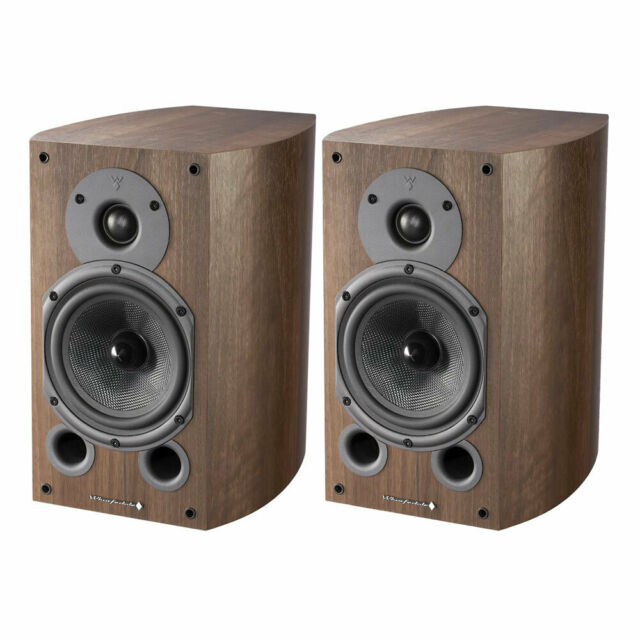
We could have filled this list with various generations of the Diamond, but have chosen to pick out the ninth-gen model of the more recent editions. Why? After a relatively fallow period – the fifth to seventh generation models weren’t great – there was a return to form with the eighth. This was much more like it when it came to sound, but these speakers still leaned heavily on under-cutting their obvious rivals on price for their appeal.
Things changed with the 9.1. This was the Diamond back to its ambitious best with fancy curved cabinets, a sophisticated Kevlar-coned mid/bass unit and a rather sweet-sounding tweeter. Build was excellent too – something not always a strength of earlier versions.
The 9.1 sounded detailed and transparent, could play all types of music with ease, and offered a level of insight well beyond their £180 price level. Later Diamonds took things even further, but for us the 9.1 still sticks in the mind.
Wharfedale Evo 4.4 (2019)
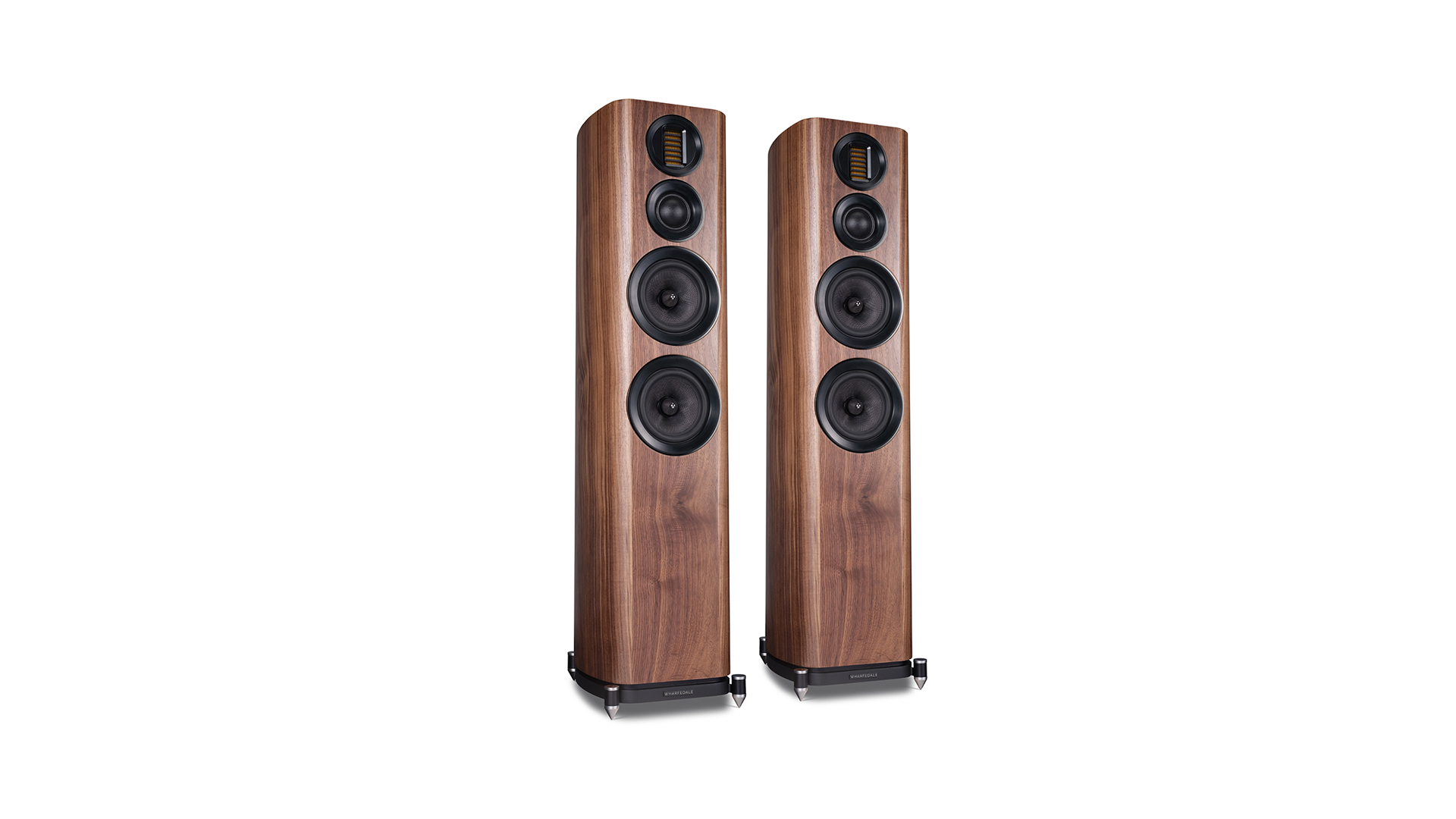
We don’t give Awards lightly, so when Wharfedale’s Evo 4.4 floorstanders picked up a Best Buy gong for 2020 you can be sure that we compared them to every possible rival. Against them, they came up trumps.
We’re still impressed at the ambitious engineering of these speakers. You’re looking at a true three-way design with an AMT (Air Moton Transformer) tweeter, a 5cm dome midrange and a pair of 15cm bass drivers. Add a carefully calibrated crossover and excellent build quality and you have a class-leading tower.
The Evo 4.4 are mature and insightful-sounding performers, as comfortable exploring the subtleties of instrumental textures and dynamic nuances as they are pounding out bass beats and delivering thundering crescendos. It’s all done with a sonic sophistication that’s more usually found at higher price points.
Wharfedale Linton Heritage (2020)
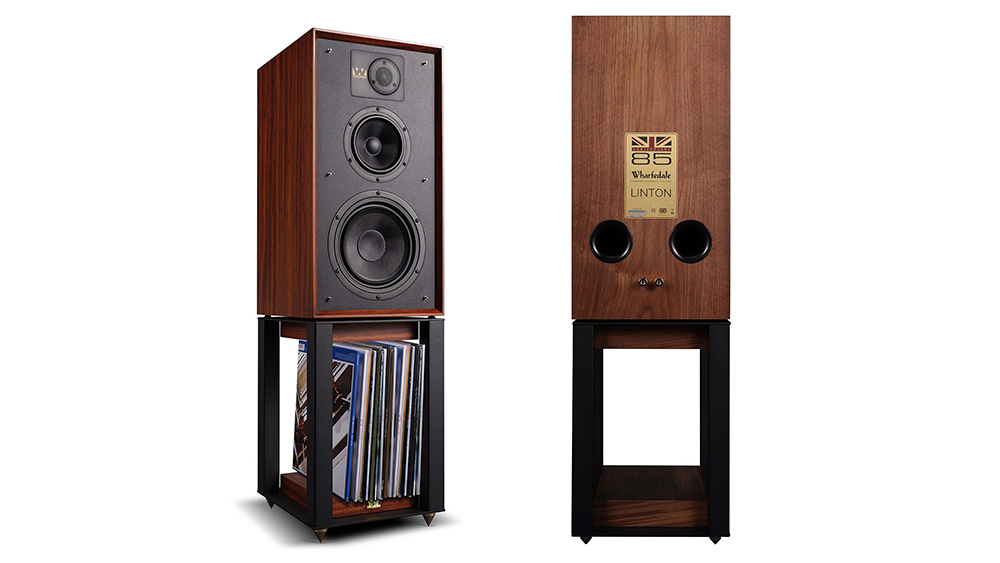
The current love of all things retro hasn’t been ignored at Wharfedale Towers. As you’ve seen, the company has a rich history to mine, and the first fruits of that are the new Lintons. These are massive three-way standmounters that echo the proportions and styling of speakers made back in the 60s and 70s but are packed with modern innards and engineering.
Their sonic balance also reflects the past with a big hearted and rich presentation that’s quite alien to most modern alternatives. But Wharfedale has been smart in not taking the retro theme too far, so the new Lintons are as detailed and dynamic as the best of their modern price rivals.
Add some great-value dedicated stands (that also double as storage for records) and you have a pair of speakers that represent excellent value for money. They’ve been a huge hit for the company since their introduction, and rightly so.
Wharfedale Diamond 12.3 (2020)

Talk about Wharfedale’s Diamond series with any hi-fi fan and 99 per cent of the time the first thing that’ll come into the conversation is that they are great value standmounters – which makes sense as that was the first type of speaker to carry the name when it launched back in 1982.
But this may change in the very near future as the company’s latest Diamond series floorstanders are well worth talking about as well, based on our testing. The current What Hi-Fi? Award-winning Diamond 12.3 are a seriously good, affordable set of floorstanders that easily deserves a place on this list as one of the best speakers ever made by Wharfedale.
The speakers feature a 2.5-way design that uses the upper 13cm driver to cover everything from the midrange downwards. A second driver is then used to reinforce the low end. Backing this up they then use the same tweeter seen throughout the Diamond 12 range – a 25mm tweeter coated in a woven polyester soft dome.
The combination works a treat, letting them deliver the best audio experience we’ve had at this price. If you’re still in doubt as to why these speakers deserve a place in this list, our original Wharfedale Diamond 12.3 review says it all: “Don’t buy another tower at this level without hearing this one first.”
MORE:
10 of the best Naim Audio products of all time
9 of the most underrated British hi-fi products we've ever tested

Ketan Bharadia is the Technical Editor of What Hi-Fi? He has been reviewing hi-fi, TV and home cinema equipment for almost three decades and has covered thousands of products over that time. Ketan works across the What Hi-Fi? brand including the website and magazine. His background is based in electronic and mechanical engineering.
- Alastair StevensonEditor in Chief
